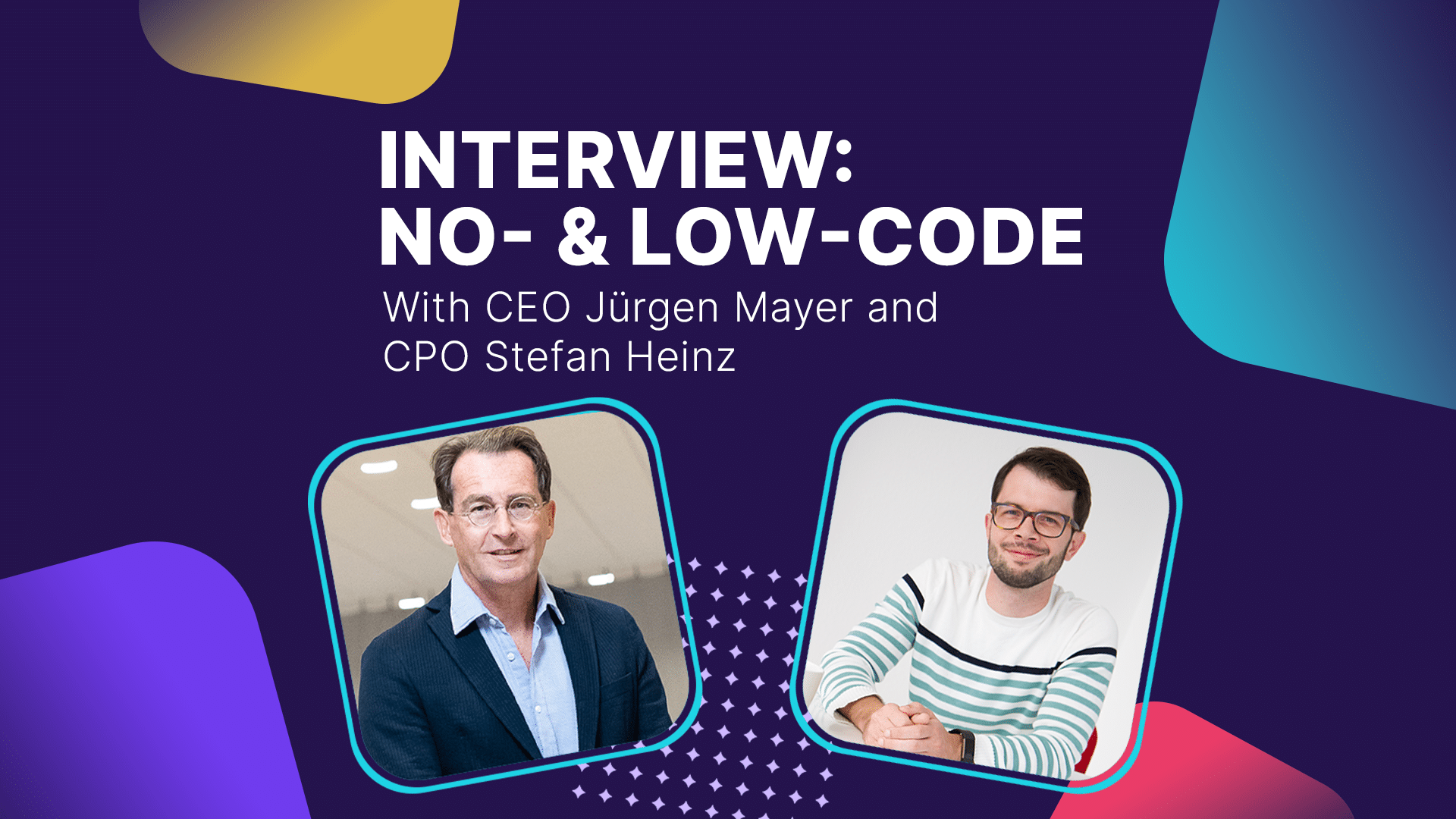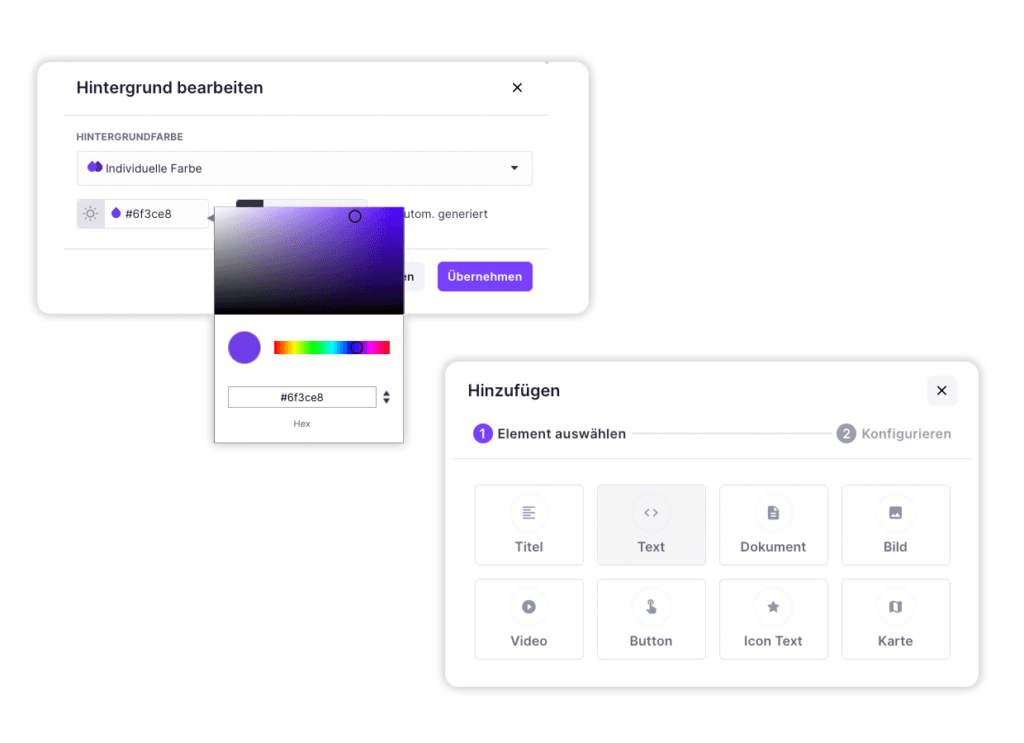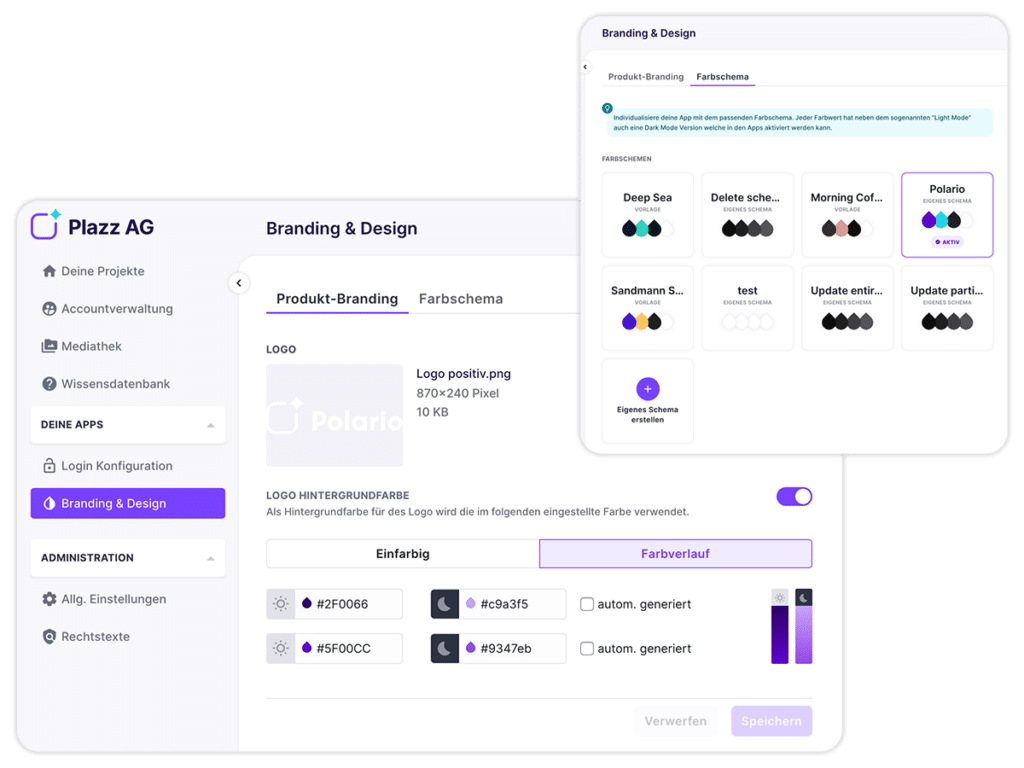Demand for no-code and low-code platforms will continue to grow. There are several reasons for this. Personnel resources in IT departments are limited. At the same time, the market requires ever faster delivery of apps and applications. As a result, speed is increasingly becoming a differentiator and competitive advantage for companies.
No-code and low-code simplifies application programming by using pre-built blocks through a graphical user interface. We asked plazz AG CEO Jürgen Mayer and CPO Stefan Heinz for an interview where they tell us about no-code and low-code approaches and how these approaches are reflected in Polario.
Is the no-code approach merely a trend or already a permanent feature that will shape the future?
Jürgen Mayer: I can report a great deal of momentum in the no-code and low-code market. The plazz AG has been developing no-code solutions for the international event and employee sector for 10 years. Companies that want to keep pace with international competition today need to be very fast and dynamic. Against this backdrop, ever shorter product and service life cycles pose particular challenges for companies. So-called no-code and low-code solutions are developing rapidly and seem to be becoming the new industry standard. According to market research company Gartner, the future of software development will lie in reducing programming effort to a minimum (low-code) or creating apps completely without coding (no-code). Gartner predicts that by 2024, around two-thirds of all applications will be created on a low-code or no-code application platform.
No-code and low-code is currently on everyone’s lips. What could be the reasons for this?
Jürgen Mayer: The trend toward no-code and low-code development has many origins: the technical realities, changing demographics, the lack of developers. Gen Z users have grown up digitally. They expect business software to be intuitive to use – just as they know it from their private apps on their smartphone or tablet. To achieve this, it is necessary to bundle the individual steps of a business process into an automated, continuous and clear end-to-end process. When we as plazz AG have to participate in tenders and use some platforms, we see what incredible legacy IT is still in use in Germany. Actually, in this day and age, a total no-go.
What do you see as the USPs in no-code and low-code solutions?
Jürgen Mayer: Users typically employ standardised building blocks that can be assembled via the graphical interface using simple menu navigation. This no-code development environment enables employees who are not familiar with technology to create their own applications or program sequences without having to grapple with programming languages. Scarce resources in IT departments and among programmers can be easily expanded by employees from specialist departments. Pre-built building blocks also make it easier and faster to program processes.
Stefan Heinz: No-code and low-code thus means time and resource savings, more creativity in implementation and more flexibility in short-term adaptation.
How do you describe the no-code approach in Polario?
Stefan Heinz: Polario pursues the idea of managing a technically complex platform in the same way that websites are created and maintained today. Away from a rigid catalogue of requirements, away from dependence on IT staff, and towards self-service or managed service with Polario. To achieve this goal, however, it is necessary to work out your own use case from generalised modular building blocks, recognise their potential, and interpret and implement them individually.
Thanks to the customisable UI using a no-code approach, it is easy to change a colour, swap a logo or place a button at a later date. In Polario, all you need is access to a CMS and knowledge of what needs to be changed. As with an HTML-based website, the content management system is the interface and administration surface for the product. The difference, however, is that we roll out changes to three different systems (web app, native iOS app, native Android app), thereby reaching the target audience on each platform with the best possible user experience.
What can the customer expect with the Polario no-code platform?
Stefan Heinz: Polario sees itself as a platform. The platform has a constantly growing and maturing
range of functions. Polario’s no-code functionality currently covers over 40 functions. This is based on essential features and is constantly being expanded by the community and the associated requirements. As a Polario customer, you can add, customise or remove functionalities at any time with just a few clicks and without in-depth programming knowledge. This means that each Polario product can be viewed individually and changes in its characteristics during the period of use.
An elementary feature of Polario is the autonomous user or rights and role management. What is meant by this?
Stefan Heinz: Polario serves different use cases. However, what they all have in common is the desire for sophisticated user and role management. That’s why the platform not only offers the ability to manage user profiles, but also to create or import group segmentation. These (target) groups form the basis for distributing functionalities and content in a targeted manner and controlling access to them. With role management, the platform also allows administrative tasks to be assigned, for example to moderate user content in the apps. Both tools, user management and role management, can be fully managed via CMS and adjusted at any time.
How will Polario make it possible to build workflows and processes independently?
Stefan Heinz: With the help of Polario Workflows, entire processes can be automated and digitised. Similar to models such as Zapier and Co, this involves the independent creation, editing and management of automated processes. These include business workflows such as online registrations, traditional employee purchasing, monthly newsletters, booking workshops or scheduling appointments. These and many other scenarios are possible thanks to the modular system and can be customised or developed collaboratively. The goal of every Polario workflow is self-sufficient configuration and maintainability.
What does the future hold for the Polario no-code platform?
Stefan Heinz: plazz AG is constantly developing Polario further. This includes communicating with customer IT structures in order to include existing services, for example. As a result, most of the features can import data from external sources or provide data for other platforms. In addition, more and more links will be provided ‘out of the box’ in the future. This means that there will be standard integrations such as live streaming, cloud services, voting and quiz tools. This greatly expands the range of use cases, and all integrations can be configured with just a few clicks.
Learn more about No Code and Low Code in our continuing blog article.

Low Code Platforms in Comparison – The Best Solutions for Your Business
Discover the different low code platforms and find the best solution for your business!

No-Code & Low-Code – Dynamics of Digitalization
Polario’s no-code solution approach is to manage a technically complex platform the way you build websites today.



